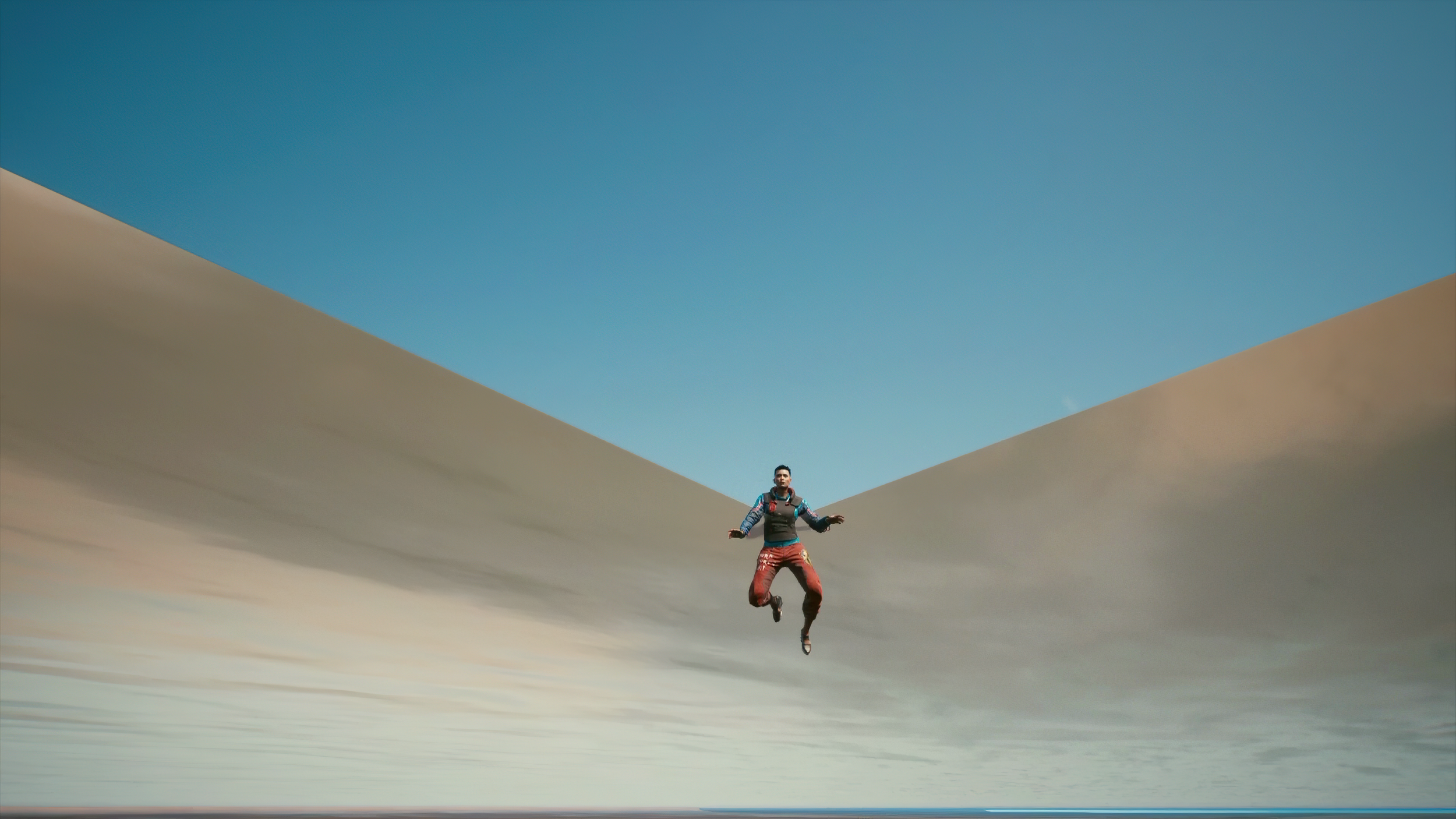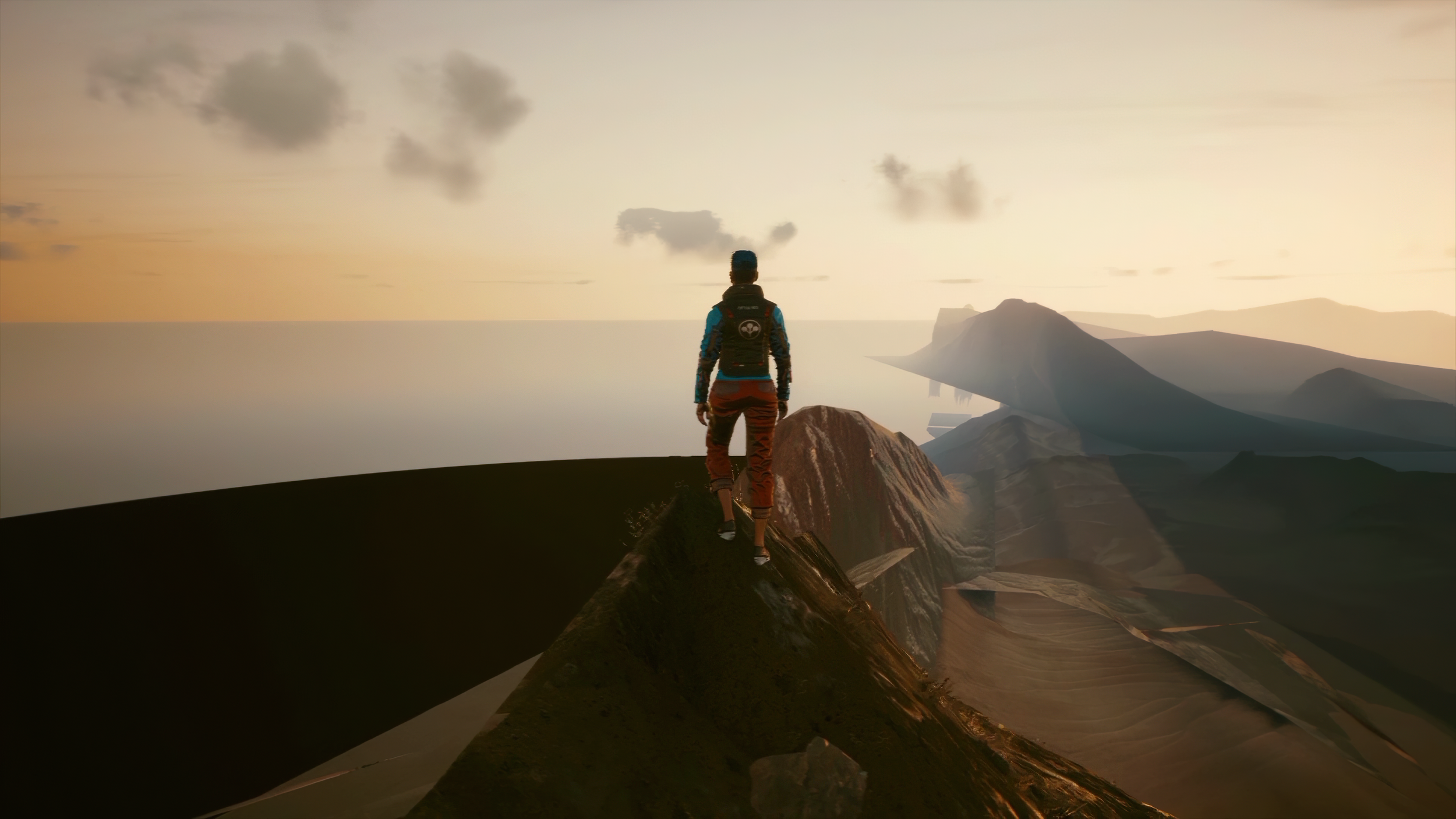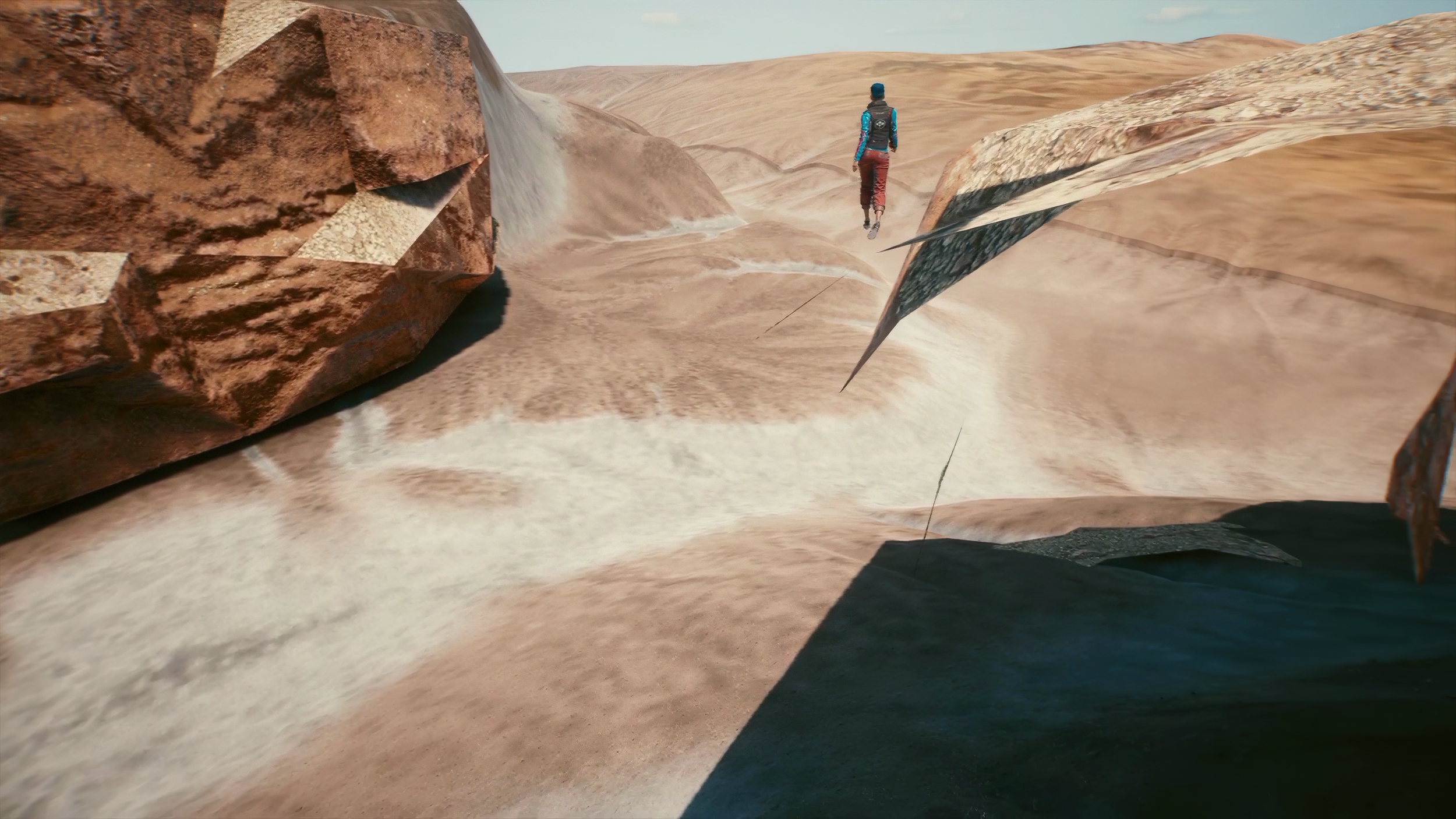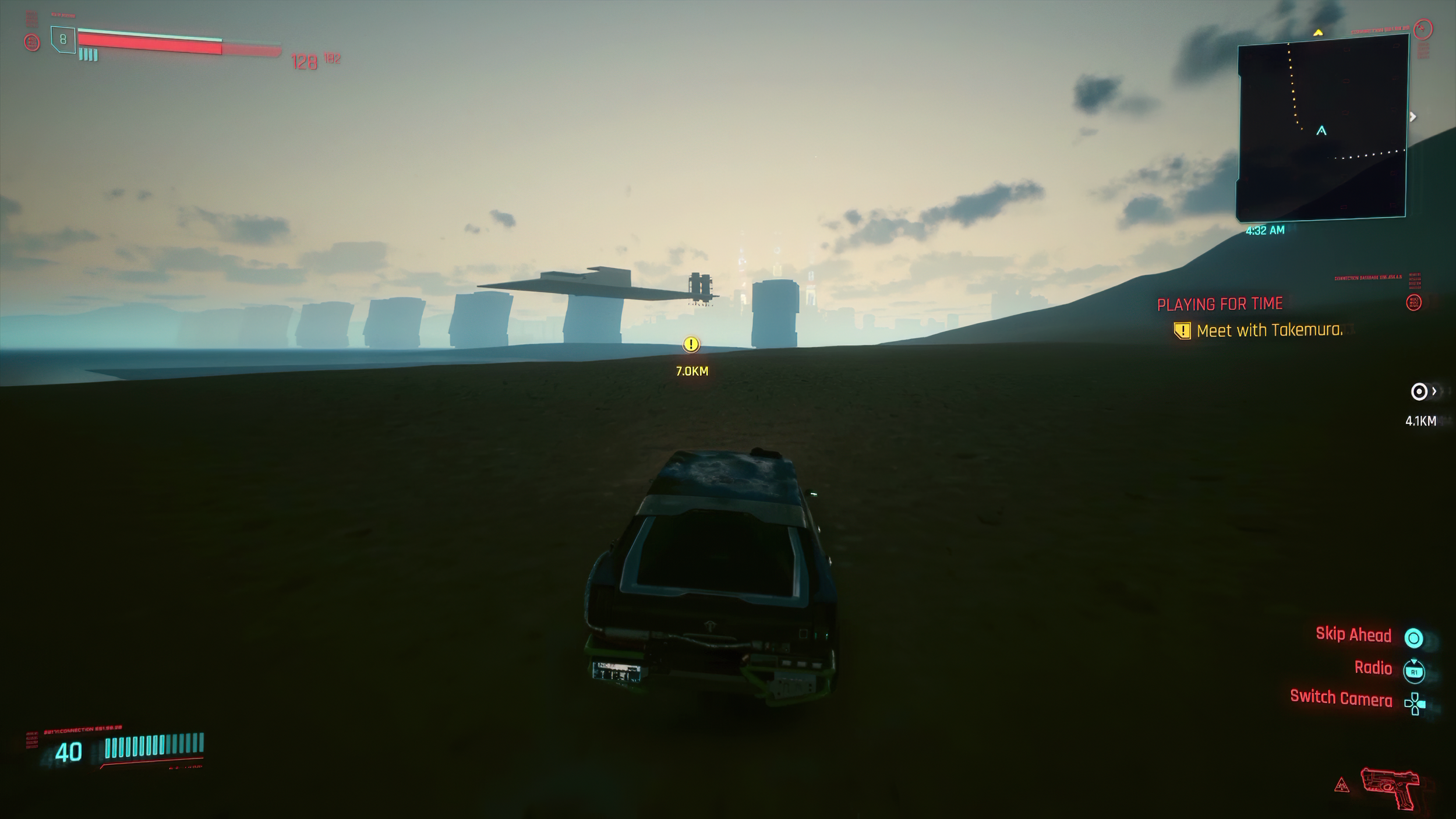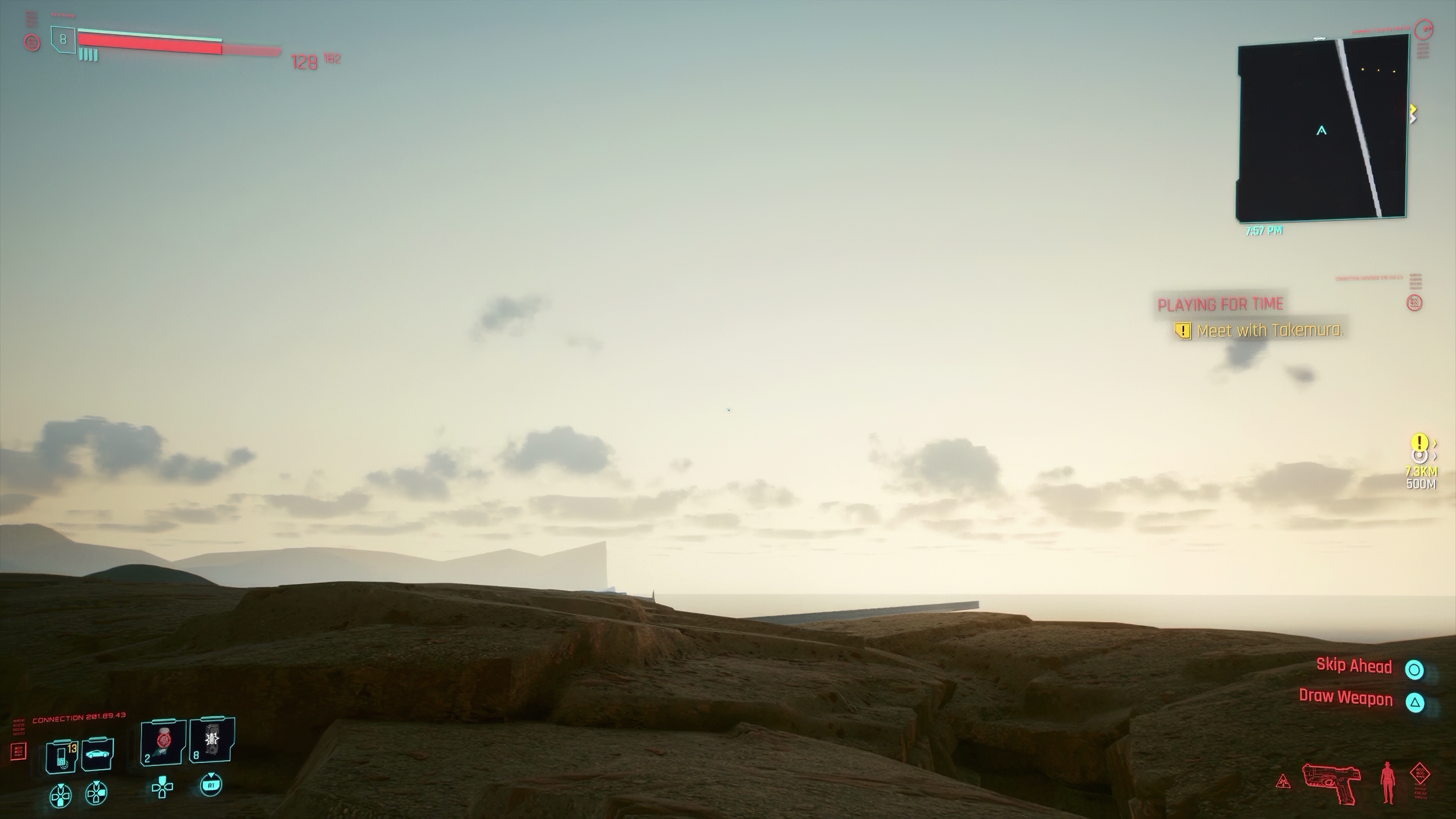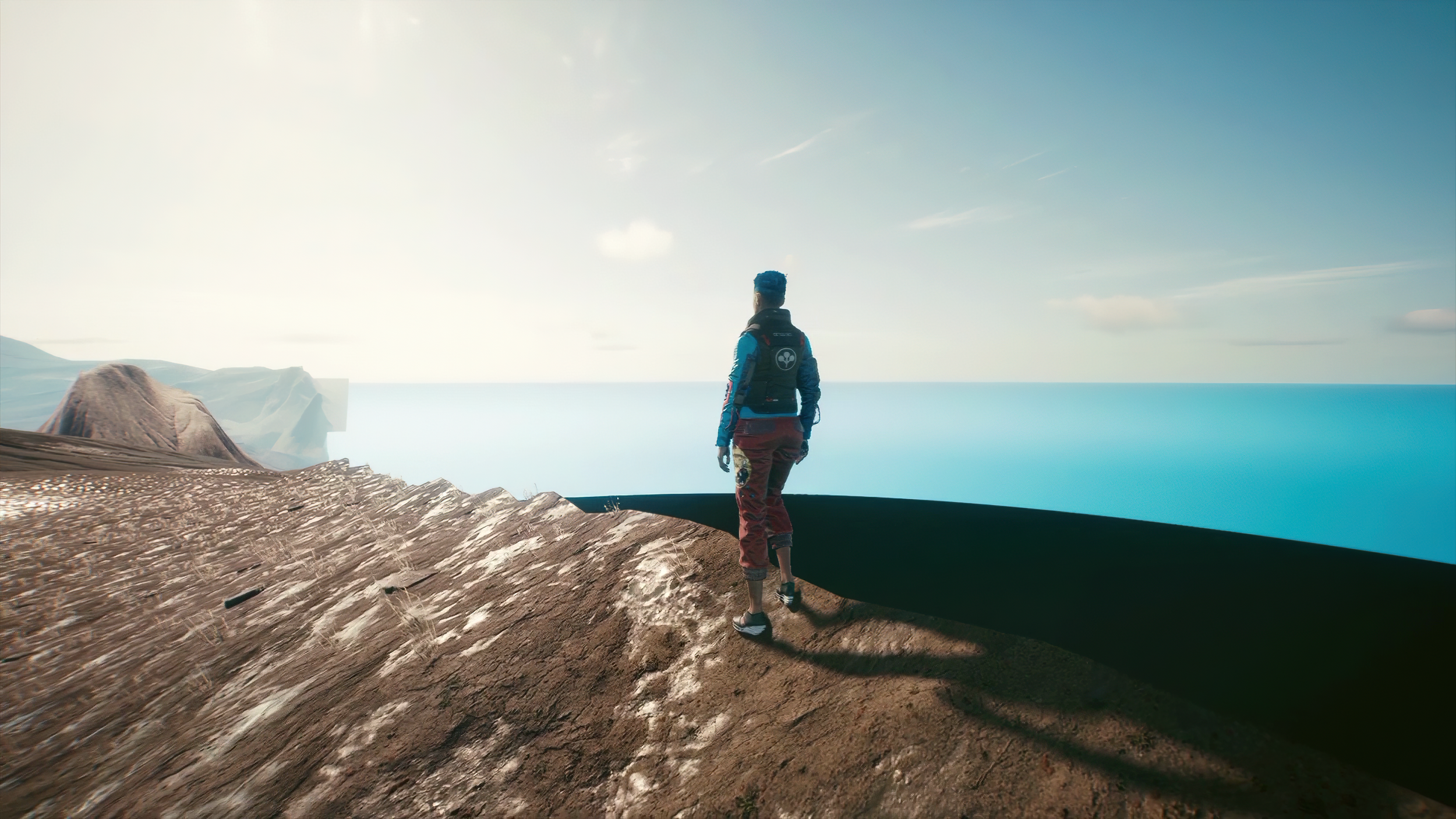PATREON-EXCLUSIVE CONTENT
〰️
PATREON-EXCLUSIVE CONTENT 〰️
Natalie Maximova’s mesmerizing machinima The Edge of the World unfolds as an exploration of boundaries within the landscapes of Cyberpunk 2077 that is both a virtual dérive and epistemological inquiry. In this video essay, Matteo Bittanti explores its unexpected connections to a seminal movie of the 1990s.
In Peter Weir’s seminal The Truman Show (1998), Jim Carrey masterfully embodies the eponymous character, Truman Burbank, orchestrating his escape from the confines of Seahaven Island—a virtual prison existing in a state of dual unreality. Not only does this idyllic town fail to manifest in the tangible realm of the United States — its supposed setting within the film’s intra and extra-diegetic reality — but it also lacks a proper existence within its own filmic world. In fact, Seahaven Island emerges as an elaborate fabrication, an expansive film set where its inhabitants willingly assume the roles of actors. Truman alone, akin to many protagonists of Philip K. Dick’s stories, remains oblivious to this deceitful charade.
As the reluctant victim of this perverse concoction gradually awakens to his spectacular “golden cage” imprisonment, he plots his liberation through a makeshift tunnel concealed within a basement. Astonishingly, in the globally broadcast reality show that commands an audience of millions, we witness Truman defying his captors by embarking on a daring escape aboard a humble sailboat, departing from Seahaven Island’s shores. Yet, the puppeteering TV producers — modern day demiurges — unleash a tempestuous storm in a desperate bid to sabotage Truman’s voyage. Although the protagonist teeters on the precipice of drowning, his unyielding spirit propels him forward, sailing until his vessel collides with the imposing barrier of the dome.
His boat hit the wall.
In the past two decades, “The boat has hit the wall” has transcended mere linguistic expression and evolved into a shared vernacular, encapsulating a particular scenario wherein the confines of systemic or structural obstacles render their eventual overcoming seemingly insurmountable. An intriguing example can be encountered in a “peculiar” 2013 interview of Kanye West by Zane Lowe on BBC Radio One.
With its distinct resonance, this phrase has indelibly imprinted itself upon the collective psyche, assuming a nuanced significance that sets it apart from the more prevalent idiomatic trope of “hitting a brick wall.” This mantra permeates the vernacular, albeit perhaps not as persistently as the notable slogans of another influential late 1990s Hollywood production, The Matrix, such as “a glitch in the matrix” (which inspired a captivating 2021 documentary by Rodney Ascher), the tantalizing “red pill vs blue pill” quandary, the paradoxical “there is no spoon”, not to mention the evocative “going down the rabbit hole” which can be traced back to Lewis Carroll’s timeless opus, Alice in Wonderland.
In the opening scene of Maximova’s The Edge of the World, an accelerated vehicle careens through the desert, mercilessly trampling cacti in its path—a stark departure from Truman’s maritime escapades. And yet, the end result is the same. The wall has been hit. In this case, “the car has hit the wall”. This powerful image reverberates with symbolic resonance, evoking, among other things, the failure of the Trumpian fantasy of an impregnable, fortified, six-feet tall wall.
Truth be told, we’re not on Seahaven Island anymore, Maximova’s alter ego emerges unscathed from the wreckage, poised to confront the seemingly impenetrable barrier. Climbing the rocky terrain, she discovers an opening — a portal to the unknown. As she gazes back at the sprawling metropolis of Night City, a sense of trepidation mingled with anticipation fills the air. And then, with a leap of faith, she plunges into the depths of the metaphorical “rabbit hole,” an allegorical passage to the realm where the conventional rules governing reality disintegrate.
What unfolds next is a dizzying descent — or rather, ascent — into an otherworldly space, where fragments of structures appear and vanish, creating an erratic, unpredictable choreography. The landscape, bereft of textures and logic, defies comprehension. In a disorienting shift of perspective, we become voyeurs in this strange realm beyond the visible, witnessing its broken beauty from multiple angles. Around the two-minute mark, the enigmatic protagonist finally materializes as the perspective switches from the first to…
Matteo Bittanti
This is a Patreon exclusive article. To access the full content consider joining our growing community.


